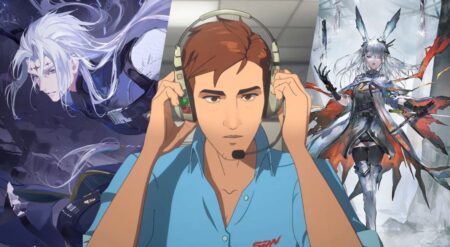
Young Justice has just concluded the first half of its long-awaited third season. After six long years, our favorite teenagers, now adult heroes, are continuing their battle against evil with new sinister forces at play. I didn’t get the DC Universe service when it initially came out, as I felt let down by the quality of the new content they initially offered. However, once one of my favorite DC properties came onto the service, I had to immediately subscribe.
It may seem like a lot to subscribe to a streaming service for only one show, but Young Justice, with its brilliant and innovative style of storytelling, more than makes the deciding factor. I hold that this show continues the tradition of and builds upon the legacy of the DCAU by having the best overall approach in narrative design in DCTV. While I think some things could still be better with the show, such as its treatment of one or two characters of color, something I intend to write about in another piece, I still think it presents an excellent model for how DCTV, and other DC mediums for that matter, should tell stories.
Young Justice richly incorporates the various elements of its source material to make a universe with exceptional storytelling. The drama the characters face is relatable and grounded. Other comic book movies and tv should take from the show’s example.
Young Justice smartly incorporates the various characters of its IP whenever it has the opportunity. By pairing and even merging them with disparate characters and concepts, it presents great reinventions of classic characters while retaining the core of who they are. It also does so in a way that ties these various characters and their storylines together. This is seen most recently within episode II’s, “Another Freak,” introduction of Cyborg and tying his powers to the Father Box.

This connection to the New Gods was never an aspect of Victor’s origin in the comics, but the show fused the concepts together in a smart and efficient way. The same could be said for the merging of Giovanni Zatara, Zatanna’s father, and Dr. Fate in the first season of the show. By making these narrative connections between initially disparate comics concepts, Young Justice introduces its viewers to the various characters of DC lore firmly within the context of its own universe, smartly connecting them all in the same story web.
A frustrating aspect I’ve had with a lot of comics and comic-based storylines is the unwillingness to let their characters grow and move on with their lives. Young Justice has never had this issue, letting its characters and the relationships between them change and making them the better for it in allowing them to have this range of life experience. We see this especially with the core cast of Robin/Nightwing, Artemis, Aqualad, Kid Flash, Superboy, and Miss Martian.
Through the first two seasons, they all experienced hardships in their relationships that felt grounded and relatable, even when they involved superhuman elements. They experienced heartbreak, stress, and trauma. The show pulled no punches in showing the toll these experiences had on them. In the new season, they’re adults, matured into mentors for the new heroes of Brion, Halo, Forager, and the other young heroes introduced in the show’s second season. Unlike too many other superhero stories, Young Justice has never been afraid to fully show its characters growing up and changing. As viewers, we’re always eager to see where they go next because their stories are almost always dynamic.
Additionally, the third season of the show is more adult in its themes, conveying how it has grown up with its audience. Generally, the audience has tended to skew older. This likely played into why its original network, Cartoon Network, decided to cancel it because of low sales of toys based on the series. Now that it is on the DC streaming service, the writers have so much more room to explore and present adult themes. But its increased maturity never takes away from its joyful and more innocent aspects. The show has always struck a good balance and it continues to do so now.
The main villains the Team faces against, The Light, still haven’t seen justice since they’ve started their crusade. While Ra’s Al Ghul, Lex Luthor, Vandal Savage, Queen B, and others have had defeats, they’ve had so many contingency plans that our heroes couldn’t permanently put them away. While the Team would foil their plans, particularly their longstanding plot with the Reach in Season two, they’ve never fully defeated the real masterminds.
This keeps the story consistently fresh and is also reflective to an extent of the comics tradition of keeping a consistent conflict between heroes and villains. Too often superhero movies and tv will bring a villain on for only one film or season, needlessly reducing the utility of potentially fascinating villain stories and conflicts. Young Justice has virtually never had that problem, consistently leaving the door open for the villains to continue their plans. It’s also refreshing that it lets them evade capture in smart ways, almost never letting the heroes look inept or incapable. The writing on this is tight and sensible, making for an even more exciting story to look forward to.
All of this isn’t to say it’s a perfect series. I do think it could use improvement in one or two areas, but for what it has done so far it is truly incredible. If you haven’t watched Young Justice yet, the entire series is on the DC Universe app! For all the reasons I’ve noted and more, I highly recommend it. Do you have a favorite aspect of Young Justice? Do you think it is the best of DCTV so far? Let us know in the comments below.








